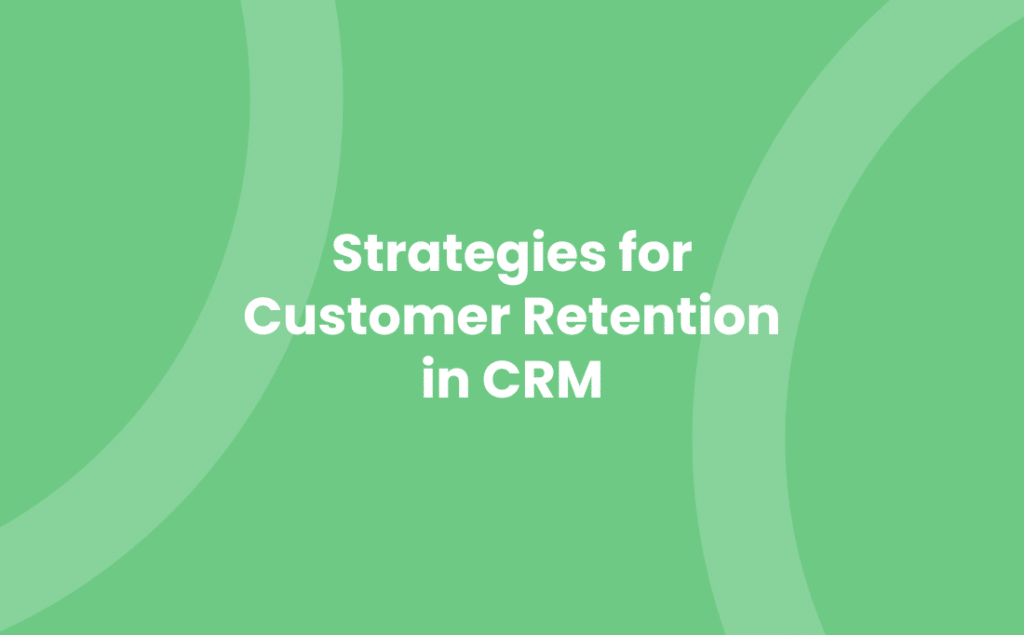All businesses need customers – fact! Attracting new customers takes considerable time, effort and money. So, once you’ve gained a customer, you should do everything in your power to keep them coming back for more! Read on for useful tips for strategies for customer retention in CRM.
What are the three pillars of strategies for customer retention?
Before we delve into the strategies for customer retention in CRM, it’s worth spending a moment looking at the fundamentals. According to The UK Ecommerce Association, the three pillars of customer retention and ongoing loyalty are:
- Providing simplicity
- Building trust
- Ensuring ongoing understanding of customers.
So, what are some great strategies for customer retention? What makes customers repeatedly return to place further orders? Ultimately, it is good customer service, but that can take many forms.
Make it easy for customers (first time and repeat) to buy from you
The best way to make it easy for customers to buy from you is to keep your purchasing process and systems as simple and streamlined as possible. For example:
- Can your internal and external sales teams create quotes quickly and accurately? This is especially important if you are dealing with a high volume of enquiries. Solutions range from pre-defined templates through to a quoting tool. Or even a self-serve customer portal to make it a truly streamlined process.
- Taking it a step further, you can connect your CRM and ERP/Finance systems. This ensures that the up-to-date prices are used and stock levels are maintained.
- Have a strict approval process? Keeping processes consistent by using workflow solutions like business process automation can ensure that. For example, quotes over £X,000 go to a manager to be approved, or discount overrides over X% are approved by a director.
- Don’t forget about Maintenance/Contract Renewals to protect your repeat business. Automatically send your customer’s renewal notices at a pre-determined time in advance. Then, schedule a follow-up call a few days later. By automating the process, you can be sure of keeping your attrition rate low whilst keeping it time-efficient.
Regularly check in with your customers

There is nothing worse for customers than exceptional pre-sales attention followed by scarce follow-up. Continue building a great relationship through your customer onboarding process and further secure your future.
Do you have a library of videos or blogs covering frequently asked questions that could be built into automated campaigns to deliver tips in regular communications? Or how about a weekly catch-up call to keep up to date? Do you share educational information on your social media channels? If so, automatically send new customer instructions on how and where to find all your valuable content.
To help with our strategies for customer retention, you might find the following blog useful:
Once customers complete their onboarding, don’t forget about them. Schedule in regular account management reviews. Do you have different engagement levels depending on the complexity of the customer? If so, schedule them based on criteria stored in a CRM field. This ensures each customer gets the attention they need.
Want a quick snapshot of your key customers? Business Intelligence tools will pull together the information you want to know quickly and easily so you can call up key customers who have ordered in the last month, say, to thank them for their business or even post them some of your branded merchandise.
Do you receive a lot of enquiries? If you have a central team for managing them, why not link your website enquiry form to your CRM to ensure no enquiry is missed? Depending on the size of your organisation, you can automatically assign them to a single salesperson, or perhaps show any unassigned enquiries on a dashboard for an administrator to distribute. Taking it further still, the enquiries can be assigned based on criteria. For example, the type/size of the customer or the workload of your team.

Make sure anyone engaging with your customer has a holistic view of them. For example, ensure account managers can see all the orders, support tickets, interactions with other people within your business, and especially financial information such as whether the customer is approaching their credit limit or are on stop. All of this gives your customers a better experience as it doesn’t matter whom they talk to within your business, everyone has access to the information they need to help your customer.
Try to identify when customers pull away from you. For example, if you have a customer that regularly places orders with you and then you don’t receive an order within the usual timeframe, your CRM could alert you to get in touch. This could be in the form of a dashboard or an automated email.
If you know when your customers assign their budgets, a timely survey could be issued to discover what the customer is likely to need from you in the next 3, 6, 9, 12 months. They can also give feedback on their satisfaction rating which flags any scoring below X to be followed up to re-establish a better relationship.
When things go wrong (and they will) provide incredible customer service
“Mistakes are a fact of life. It is the response to error that counts.” – Nikki Giovanni
The utopia of nothing ever going wrong with your product or service is unattainable; ensuring you give your customers the best experience when something does go wrong is your mission (should you choose to accept it).
A CRM solution helps you log any issues manually. Look for one that either includes a Customer Service module or one that integrates with a Support Ticket solution. Make it easy for your customers to report any issues by adding a form to your website connected directly to your Customer Service solution. Additionally, if you have a live chat facility, connect that to your Customer Service team too.
If you have a separate ticketing system, join it up to your CRM to ensure your wider team, such as account managers, can see the information to help smooth any ruffles. You want your account managers to approach customers forewarned that they might be unhappy.
Keeping the customer informed of any progress (or hold ups) is a must. This can be a manual process or workflow automation that can be used to update the customer when anything changes. For example, if the issue is escalated or you are waiting for the customer to provide information.
“It is better to disappoint people with the truth than to appease them with a lie.” – Simon Sinek
Having been a project manager for most of my career, I have always found honesty is the best policy. Don’t string the customer along with half-truths as they will lose trust in you if they discover your deception. If you are delivering bad news, it’s always best to be up front, suggest a work around if you can and apologise.
Turn your customers into raving fans
In their book Raving Fans: A Revolutionary Approach to Customer Service, Ken Blanchard and Sheldon Bowles explain how “just having satisfied customers isn’t good enough anymore. To compete in today’s business environment, you have to create Raving Fans.” In his foreword in the 1993 version, Ken Blanchard states, “successful organisations have one common central focus: customers. It doesn’t matter if it’s a business, a professional practice, a hospital, or a government agency, success comes to those, and only those, who are obsessed with looking after customers.”
By covering the various strategies for customer retention in this blog, you should automatically gain raving fans in the process. That said, you should still seek out more ways to keep your customers coming back for more.
The final tip is, don’t forget to ask for referrals. Make it a habit to ask during account reviews whether your customers can recommend someone else that could benefit from your product/services.
Further information on strategies for customer retention
In summary, in order to retain your customers and keep them happy, you need to know and understand them as well as possible. A CRM will pull together all the information you need in order to do that. You can start your CRM journey off with a very simple solution and evolve and innovate it as your business grows. Knowing everything about your customer is vital – a CRM makes that possible.
If you want to learn more about CRM or explore ways to streamline and digitally transform your business, get in touch.


